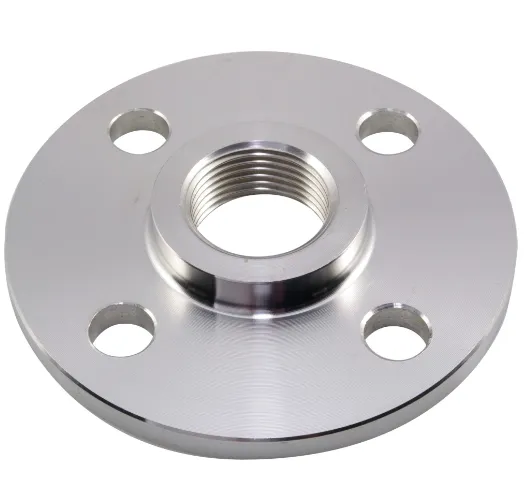-
Cangzhou Yulong Steel Co., Ltd.
-
Phone:
+86 13303177267 -
Email:
admin@ylsteelfittings.com
- English
- Arabic
- Italian
- Spanish
- Portuguese
- German
- kazakh
- Persian
- Greek
- French
- Russian
- Polish
- Thai
- Indonesian
- Vietnamese
- Zulu
- Korean
- Uzbek
- Hindi
- Serbian
- Malay
- Ukrainian
- Gujarati
- Haitian Creole
- hausa
- hawaiian
- Hebrew
- Miao
- Hungarian
- Icelandic
- igbo
- irish
- Japanese
- Javanese
- Kannada
- Khmer
- Rwandese
- Afrikaans
- Albanian
- Amharic
- Armenian
- Azerbaijani
- Basque
- Belarusian
- Bengali
- Bosnian
- Bulgarian
- Catalan
- Cebuano
- China
- China (Taiwan)
- Corsican
- Croatian
- Czech
- Danish
- Esperanto
- Estonian
- Finnish
- Frisian
- Galician
- Georgian
- Kurdish
- Kyrgyz
- Lao
- Latin
- Latvian
- Lithuanian
- Luxembourgish
- Macedonian
- Malgashi
- Malayalam
- Maltese
- Maori
- Marathi
- Mongolian
- Myanmar
- Nepali
- Norwegian
- Norwegian
- Occitan
- Pashto
- Dutch
- Punjabi
- Romanian
- Samoan
- Scottish Gaelic
- Sesotho
- Shona
- Sindhi
- Sinhala
- Slovak
- Slovenian
- Somali
- Sundanese
- Swahili
- Swedish
- Tagalog
- Tajik
- Tamil
- Tatar
- Telugu
- Turkish
- Turkmen
- Urdu
- Uighur
- Welsh
- Bantu
- Yiddish
- Yoruba

Nov . 23, 2024 20:57 Back to list
Understanding the Characteristics and Applications of Pressed Flanges in Modern Engineering
Understanding Pressed Flanges A Comprehensive Overview
Pressed flanges are pivotal components in the world of engineering and manufacturing, playing an essential role in various piping systems across industries. Their design, functionality, and advantages make them indispensable in ensuring efficient and safe operations. This article delves into the intricacies of pressed flanges, their applications, advantages, and considerations to keep in mind.
What are Pressed Flanges?
Pressed flanges are created by pressing a flat metal disc into a specific shape, typically to form a lip or a flange edge that allows for easier connection with pipes, valves, and other fittings. Unlike forged or cast flanges, which are manufactured via more traditional methods involving heating and shaping metal, pressed flanges are produced through a cold or hot stamping process. This method results in flanges that are both lightweight and robust, making them suitable for various applications.
Applications of Pressed Flanges
Pressed flanges are widely used in industries ranging from oil and gas to water treatment and chemical processing. Common applications include
1. Pipe Connections They serve as connectors in pipe systems, enabling the secure attachment of various components. This is crucial in scenarios where the transport of fluids is essential, such as in plumbing and HVAC systems.
2. Framework Construction In structural engineering, pressed flanges help create frameworks for buildings and bridges, providing necessary support while maintaining a lightweight profile.
3. Manufacturing Equipment In factories and plants, pressed flanges are often used in machinery where pipes and ducts require secure fittings. This ensures that systems operate smoothly and minimizes the risk of leaks or failures.
4. Automotive Applications Many automotive parts, especially exhaust systems, use pressed flanges due to their ability to withstand high temperatures and pressures.
Advantages of Pressed Flanges
The use of pressed flanges offers several advantages, making them a preferred choice for many applications
1. Cost-Effectiveness The manufacturing process for pressed flanges is generally less expensive than that for forged or cast variants. This cost efficiency translates to lower overall project expenses.
pressed flange

2. Lightweight Because pressed flanges are made from thin metal sheets, they are significantly lighter than other types of flanges. This feature is particularly advantageous in applications where weight savings are critical, such as in the aerospace and automotive industries.
3. Versatile Designs Pressed flanges can be manufactured in a variety of shapes and sizes, which allows for customization based on specific project requirements.
4. Resistance to Corrosion Often made from stainless steel or other corrosion-resistant materials, pressed flanges can endure harsh environments, making them suitable for chemical processing and marine applications.
5. Quick Installation The lightweight and standard sizes of pressed flanges allow for easier handling and faster assembly during installation, which can save time on job sites.
Considerations When Using Pressed Flanges
While pressed flanges offer numerous benefits, there are considerations to keep in mind during selection and usage
1. Pressure Rating It’s crucial to choose flanges rated for the appropriate pressure and temperature conditions to avoid failures during operation.
2. Material Compatibility Ensure that the flange material is compatible with the medium being transported through the piping system to prevent reactions that could compromise integrity.
3. Standards and Specifications Adhering to industry standards, such as ASTM or ANSI standards, is essential to guarantee quality and safety.
4. Installation Techniques Proper installation techniques should be followed to ensure that the flanges are securely fastened and aligned to prevent leaks and maintain the system’s integrity.
Conclusion
Pressed flanges are a crucial component of many modern infrastructure systems, offering versatility, durability, and cost-effectiveness. Their role in facilitating safe and efficient connections in piping systems cannot be overstated. As industries continue to advance, the demand for high-quality pressed flanges that meet stringent requirements will only increase. Understanding the benefits and proper application of these flanges will help ensure the longevity and effectiveness of piping systems across various sectors.
Latest news
-
ANSI 150P SS304 SO FLANGE
NewsFeb.14,2025
-
ASTM A333GR6 STEEL PIPE
NewsJan.20,2025
-
ANSI B16.5 WELDING NECK FLANGE
NewsJan.15,2026
-
ANSI B16.5 SLIP-ON FLANGE
NewsApr.19,2024
-
SABS 1123 FLANGE
NewsJan.15,2025
-
DIN86044 PLATE FLANGE
NewsApr.19,2024
-
DIN2527 BLIND FLANGE
NewsApr.12,2024
-
JIS B2311 Butt-Welding Fittings LR/SR 45°/90° /180°Seamless/Weld
NewsApr.23,2024











